Korean furniture showcases high standards of craftsmanship and a deep respect for the materials used. For the people of the “Morning Calm” country, wood was not intended to be molded or carved into elaborate designs or concealed beneath thick layers of paint that would obscure its inherent beauty. Instead, it was carefully cut to accentuate the natural grain patterns, with plain surfaces meticulously finished to enhance their natural colors and textures.
One of the key features of traditional Korean chests is the absence of large pieces until the early 20th century and the generally understated design of many of them.
CLOTHING CHESTS
BANDAJI – 반닫이
Among the various pieces of Korean clothing chests, the Bandaji was the most diverse in terms of style. It was designed for storing clothes inside, with folded blankets placed on top. In the West, it is also known as a “Blanket Chest.”
A defining feature of the Bandaji is its half-closing design, with a door that extends all the way across the front and opens downward.
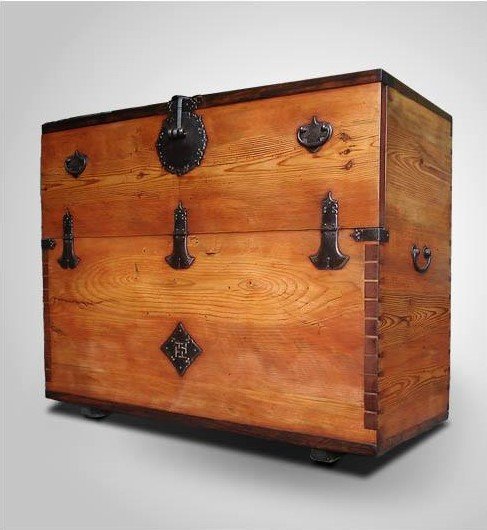
Pine wood with an opening from the front, iron fittings.
Jeolla province, Korea.
Early 20th Century.
H. 92cm, W. 115cm, D. 49cm . Collection “ANTIKASIA“
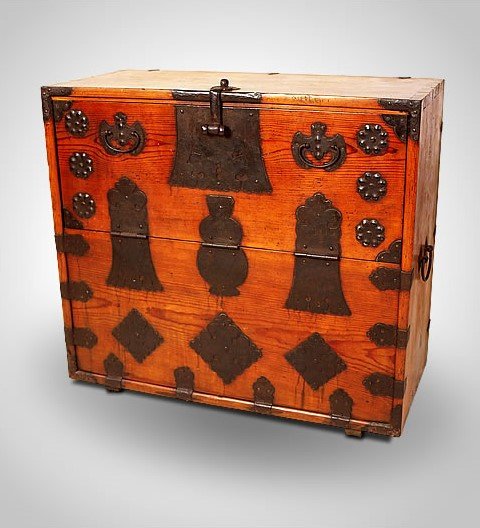
Pine wood, iron fittings, oil finish,
Gangwon Province, Korea. Late 19th Century.
H. 81 cm, W. 89 cm, D. 40 cm. Private collection.
The name “Bandaji,” which literally means “half closing” in Korean (반 pronounced “Ban” = half, 다지 pronounced “Daji” = closing), derives from the hinged door in the front of this chest. In some areas, it is opened and closed forward, so it is also called “Apdaji” (the Korean word “Ap” means “fore”).
In contrast to Jang and Nong, thick wood panels were used in making these chests. Due to their weight and for easier transportation, handles were placed on the sides of the chest.
The standard dimensions of a Bandaji are 60-100cm in height, 65-90cm in width, and 30-45cm in depth.
Among lower-class households, it was a multi-purpose piece of household furniture used indoors to store clothing inside and place a blanket on top. Sometimes it was also used to store books and manuscripts.
The inside of this structure is mostly empty, making it available as a cabinet. On some pieces, opening the front panel reveals a row of small drawers under the top panel. These small drawers were used to store small accessories.
In terms of functionality, each connection of the wood is significantly reinforced by metal fittings. The metalwork is crucial not only for enhancing the functional aspects of the Bandaji but also for its aesthetics. Therefore, unlike fittings used for other types of furniture, Bandaji fittings come in various shapes with decorative meanings. It is challenging to find Bandaji pieces of the same size and shape because craftsmen’s skills and regional characteristics allow for variations in design.
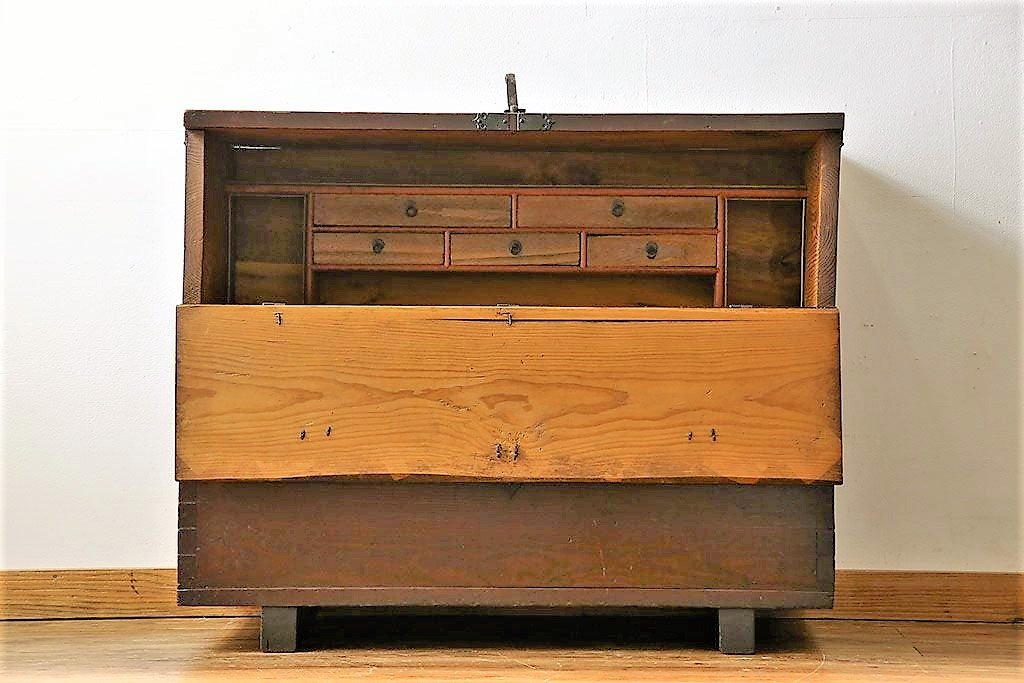
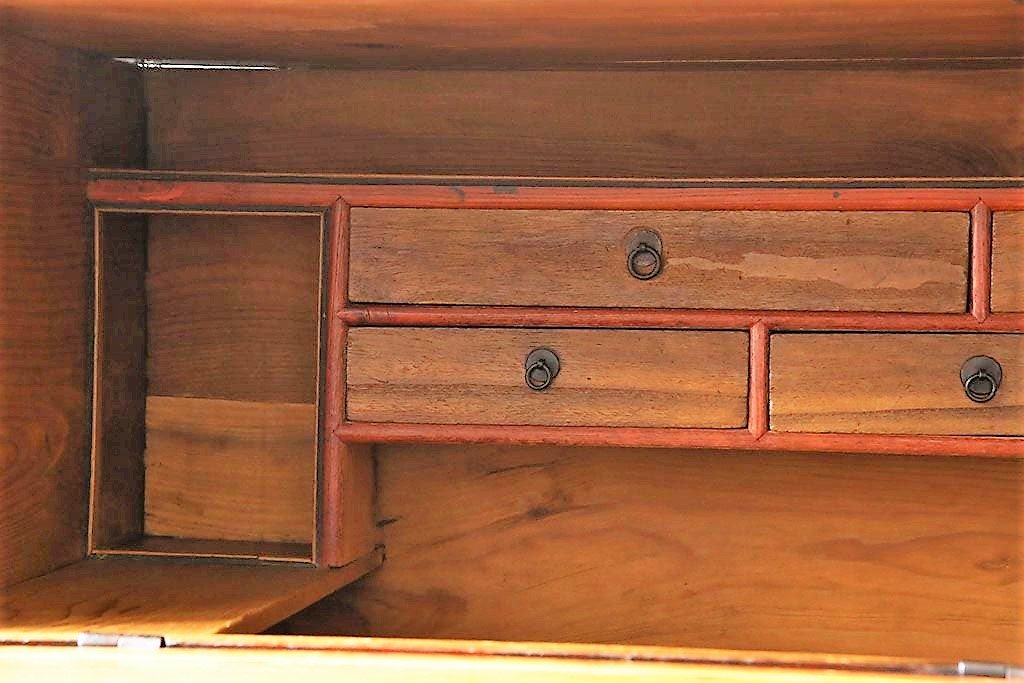
Bandaji, like soban, has its own regional characteristics, and although the basic form remains the same, the decoration and materials used can vary.
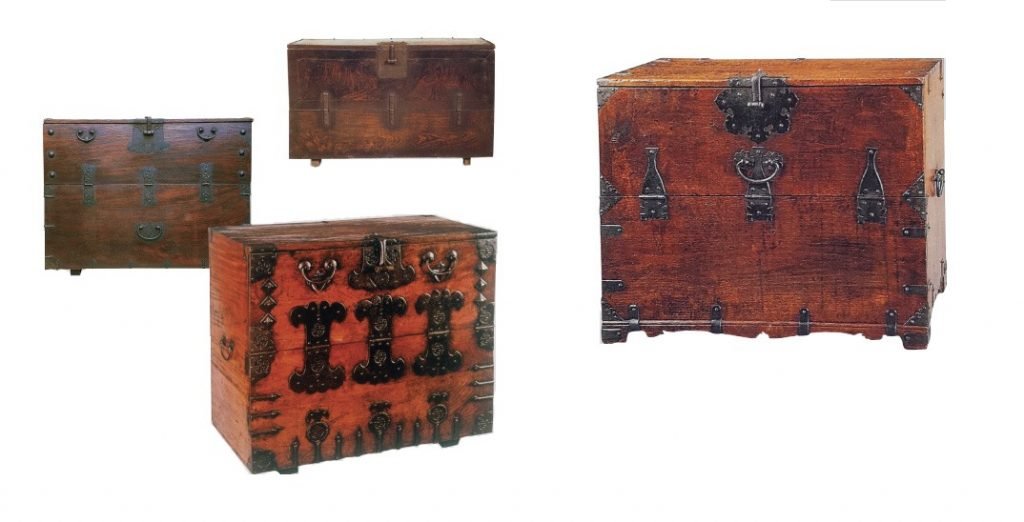
SOME UNUSUAL DESIGNS.
Most bandaji, known as blanket chests in the West, have a simple and rustic design. As mentioned above, they all open with a flap that folds down on the front of the furniture.
However, some modifications can exist, such as drawers or other openings on the front part of the chest, probably the result of special orders. These pieces are, however, rare if original. Here are some samples.
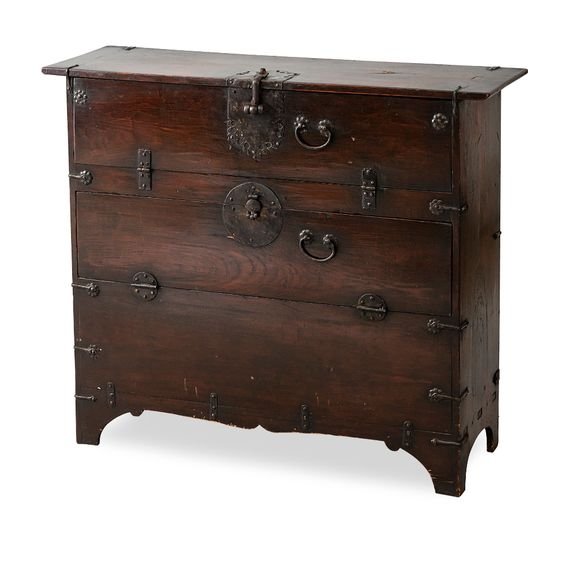
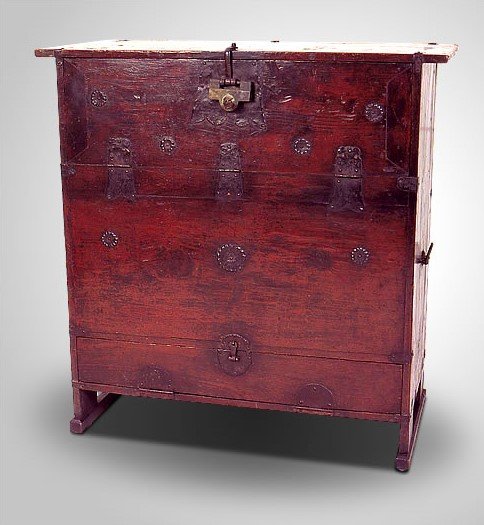
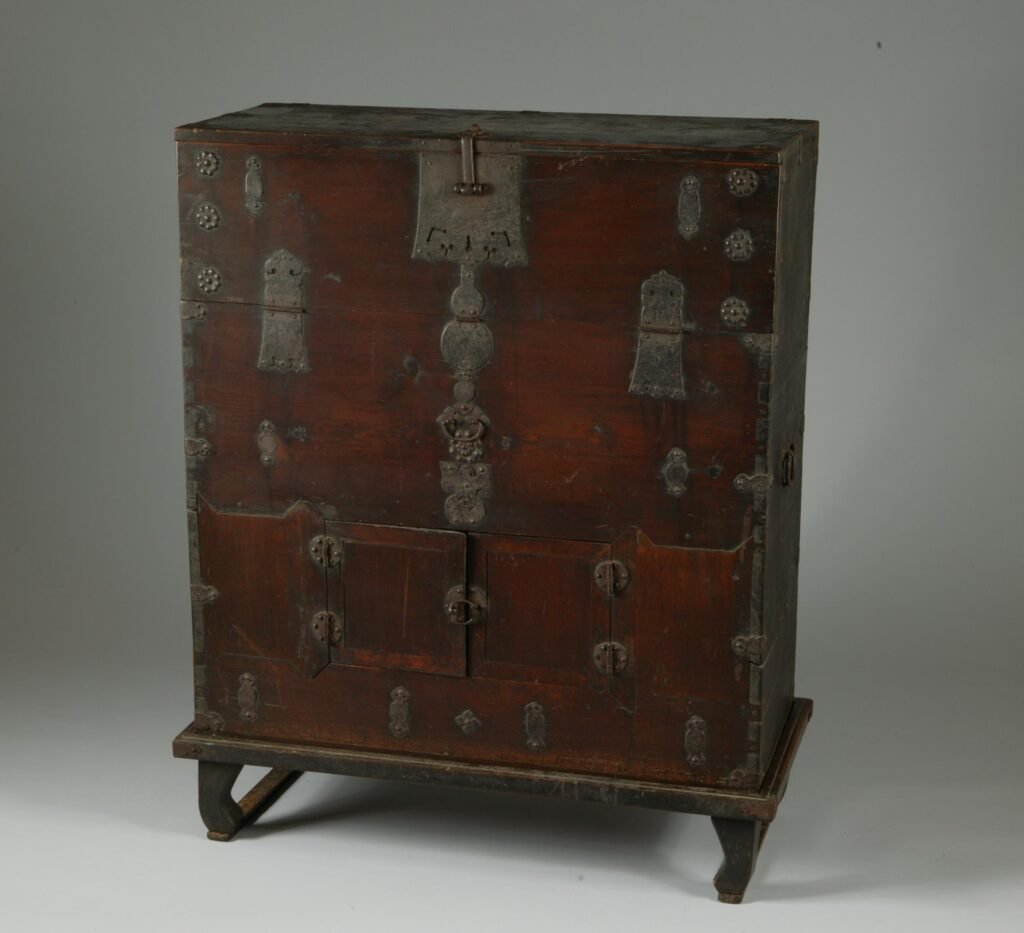
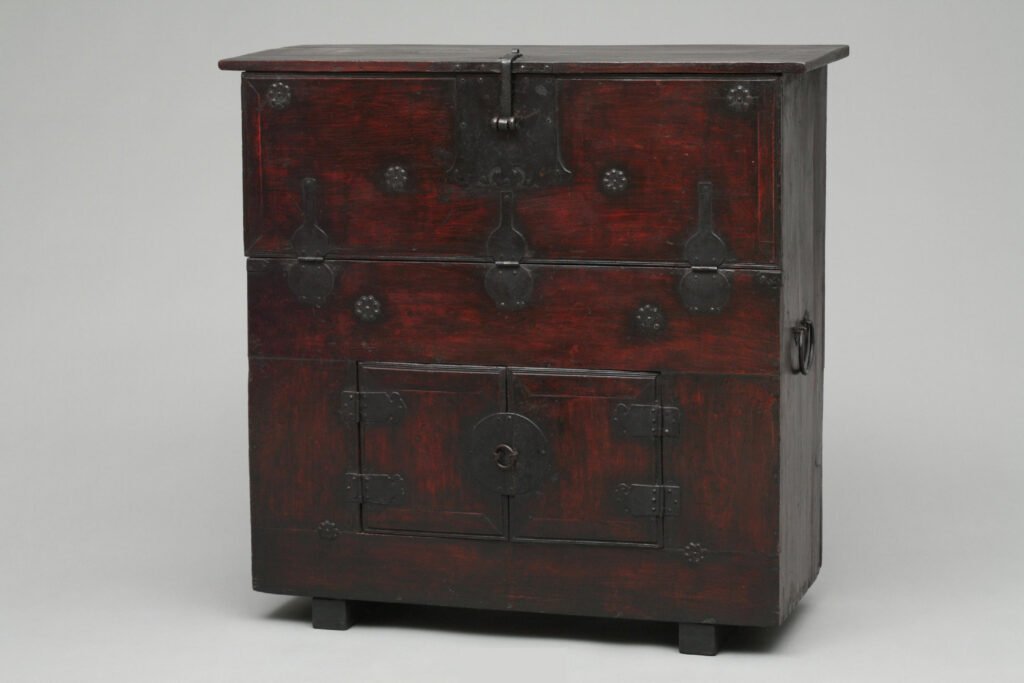
Collection: National Folk Museum, Seoul, Korea.
Photo right: Two level bandaji. Pear wood.
H. 113cm, W. 92cm, D. 38,5cm.
Collection: National Folk Museum. Seoul, Korea.
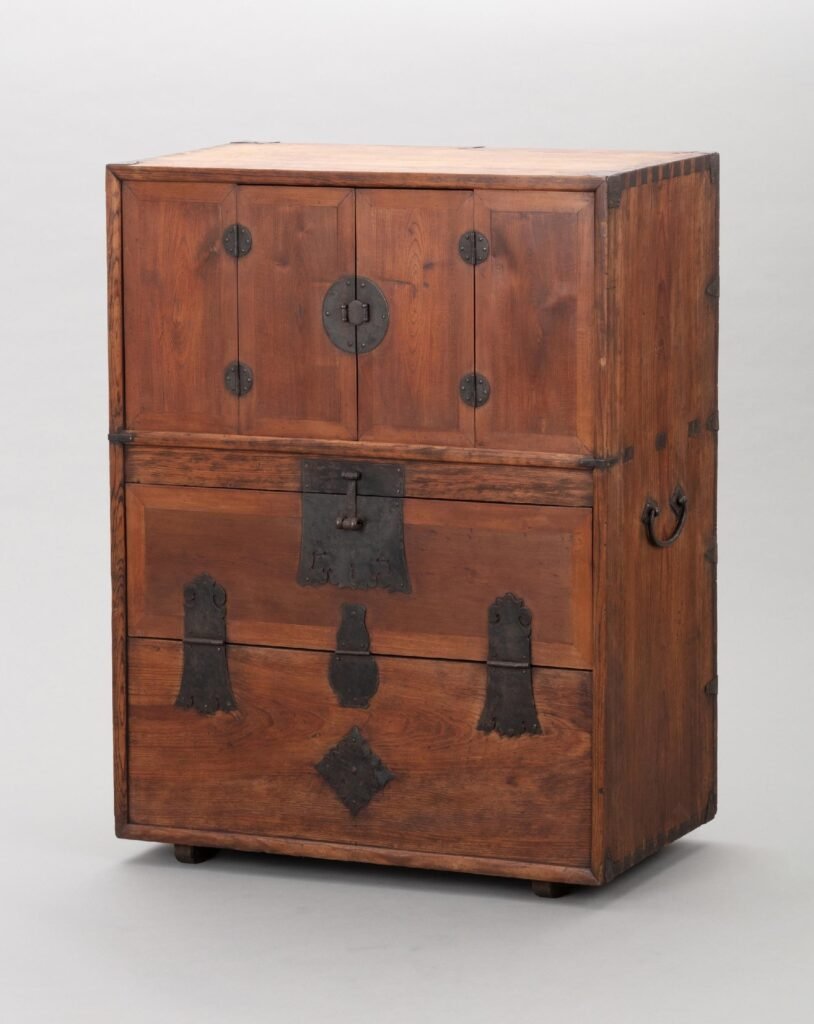
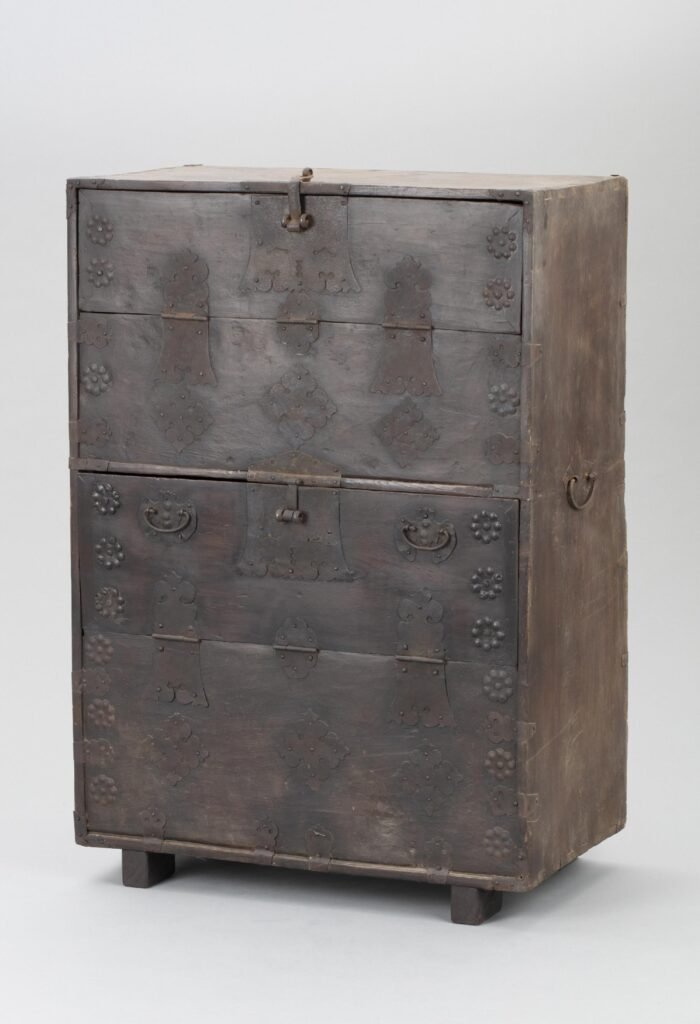
JANG – 장
Jang also called the wardrobe chest features several levels, from one to three. Each level comes with a door compartment where clothes were folded and laid flat. The top level usually features a row of small drawers.
The single-level Jang, called Morijang or head-side chest, was generally placed near the bed.
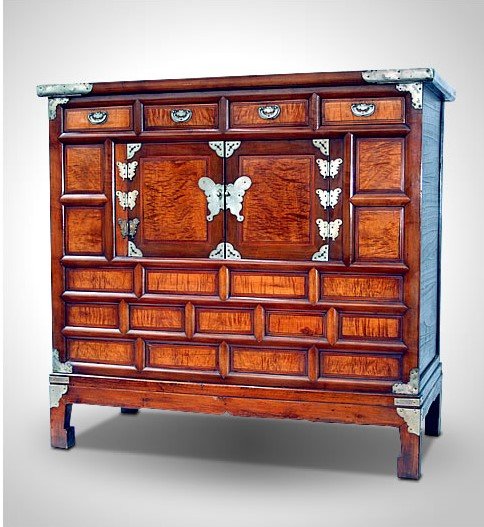
Pine, paulownia & maple panels on
the front.
White brass fittings.
Korea. Early 20th century
H. 102cm, L. 107cm, D. 50cm

H. 150cm, W. 95cm, D. 43cm
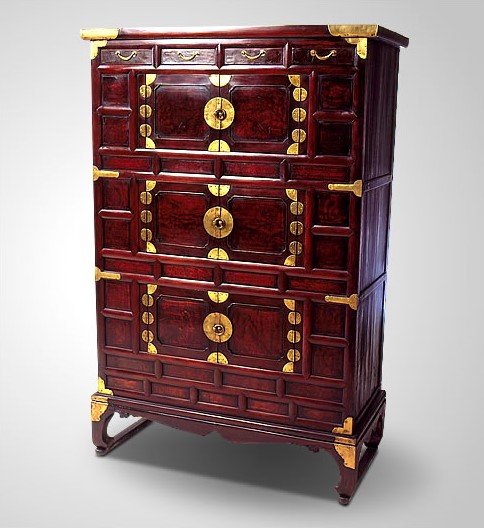
H. 166 cm, W. 110 cm, D. 50 cm.
Early to mid 19th Century.
Collection “ANTIKASIA“
NONG – 이층농
A Nong consists of two stackable boxes of equal sizes. Each level is equipped with a front door.
It differs from the Jang because each piece is separate. Even the legs are detachable so that they can be used under another chest as needed.
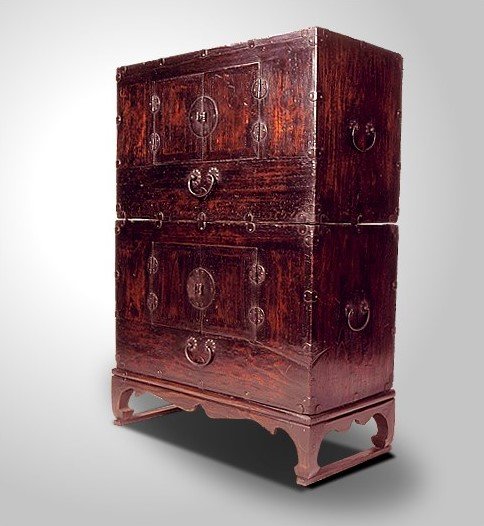
Two units stacked chest, Paulownia wood, iron fittings.
Oil finish. Legs restored.
Mid 19th century. Gyeonggi province.
H. 112cm, W. 77cm, D. 39cm. Collection: “ANTIKASIA“
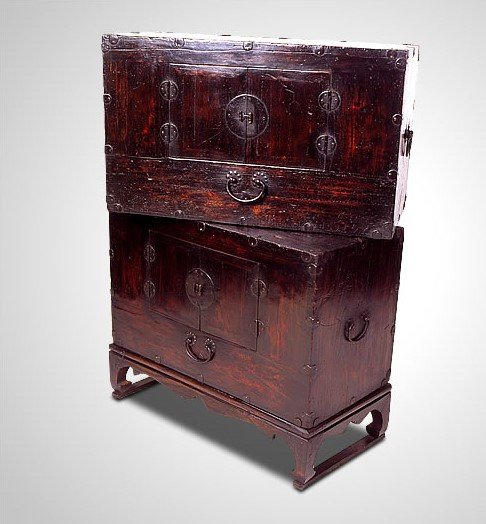
Two units stacked chest, Paulownia wood, iron fittings.
Oil finish. Legs restored.
Mid 19th century. Gyeonggi province.
H. 112cm, W. 77cm, D. 39cm. Collection: “ANTIKASIA“
Nong chests were usually smaller than Jang chests. In most cases, Nong chests come with handles on the sides. In the anbang or women’s quarters, Nong chests were highly decorated. Some were lacquered or covered with mother of pearl and sharkskin inlay.
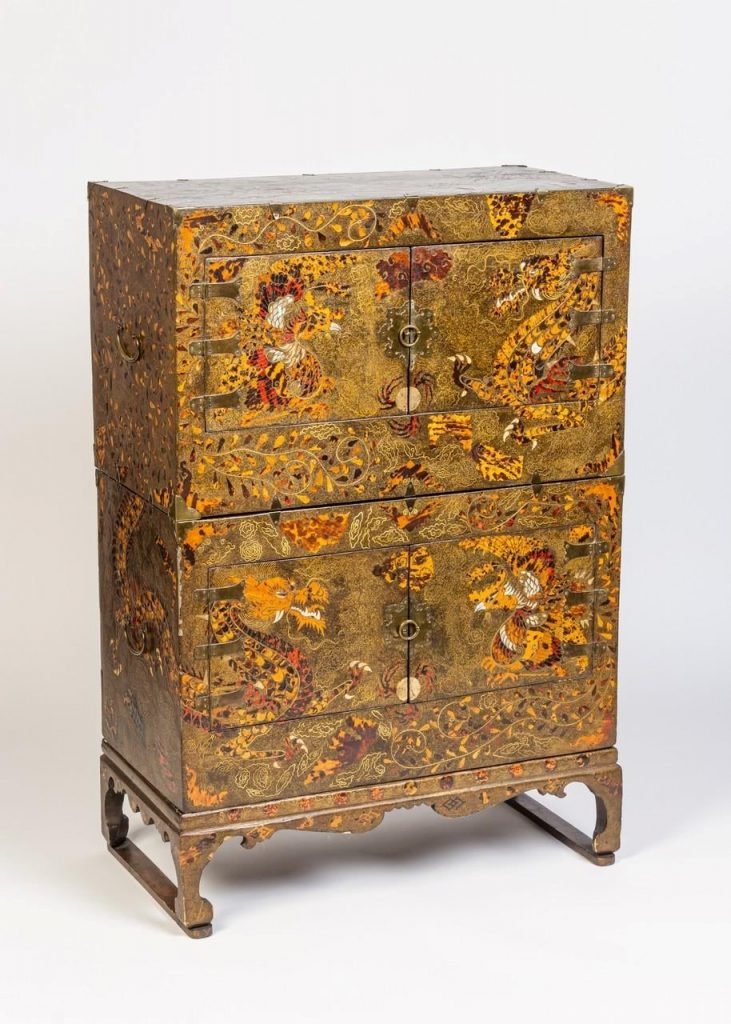
KITCHEN CHESTS
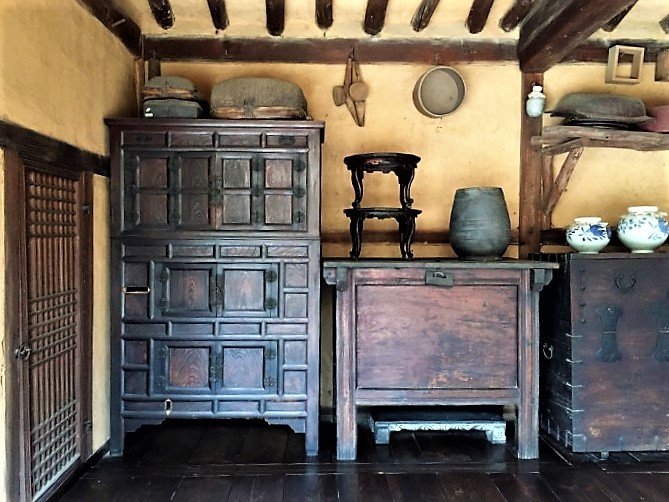
The kitchen furniture included rice boxes, portable dining tables, shelves, and cabinets. Cabinets for storing vessels and Ch’an-Jang (a type of food storage container) were made with thick pine wood frames combined with grained zelkova or elm wood. They typically had two or three levels.
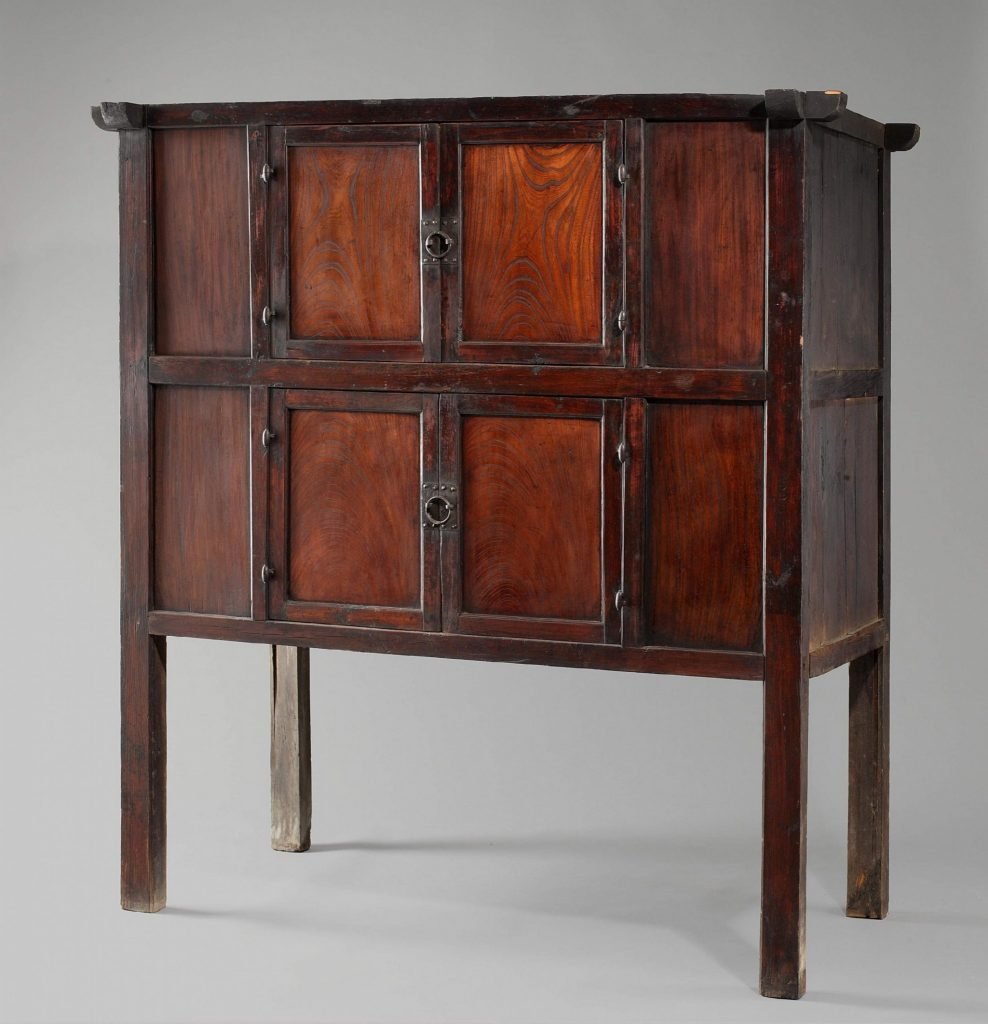
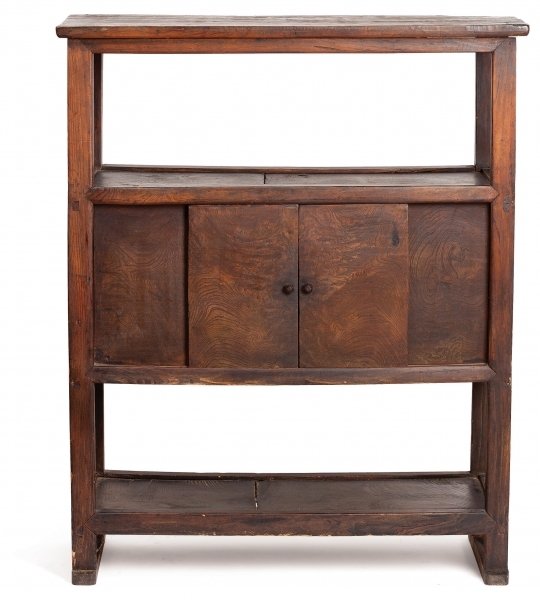
Kitchen shelf. Pine & elm wood.
H. 104,5cm, W. 86cm, D. 36cm.
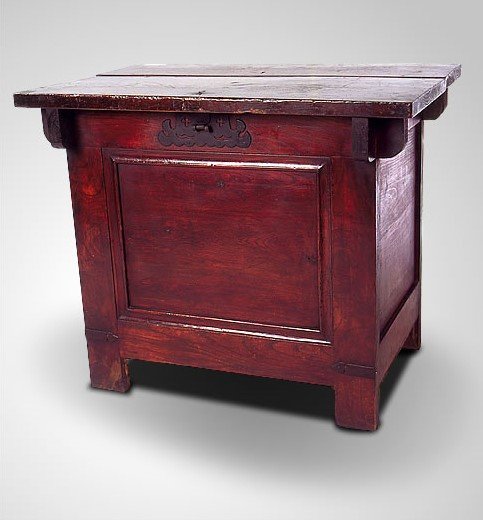
Small Korean kitchen chest
Elm wood, natural color
Top opening.
H. 68cm, L. 83cm, D. 54cm.
TUIJU – 뒤주
Tuiju, boxes used for storing rice and beans, were commonly used all over the peninsula. Larger pieces were used to store rice, while smaller ones were used for beans. Both types of boxes were constructed with elm or pine panels fitted into a thick frame designed to protect the contents from rodents and moisture. Metalwork was not common on kitchen furniture, and iron was primarily used for structural purposes.
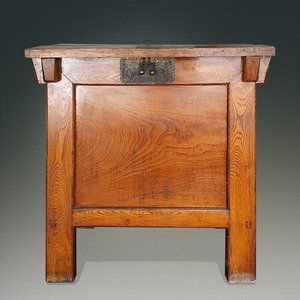
Kitchen furniture typically features heavier proportions compared to other household items. It is often designed to be solid, stable, and functional rather than thin, refined, and delicate.
Note: Some people may find it challenging to differentiate between a Bandaji and a Rice chest. Below is a brief description and comparison of these two pieces of furniture.
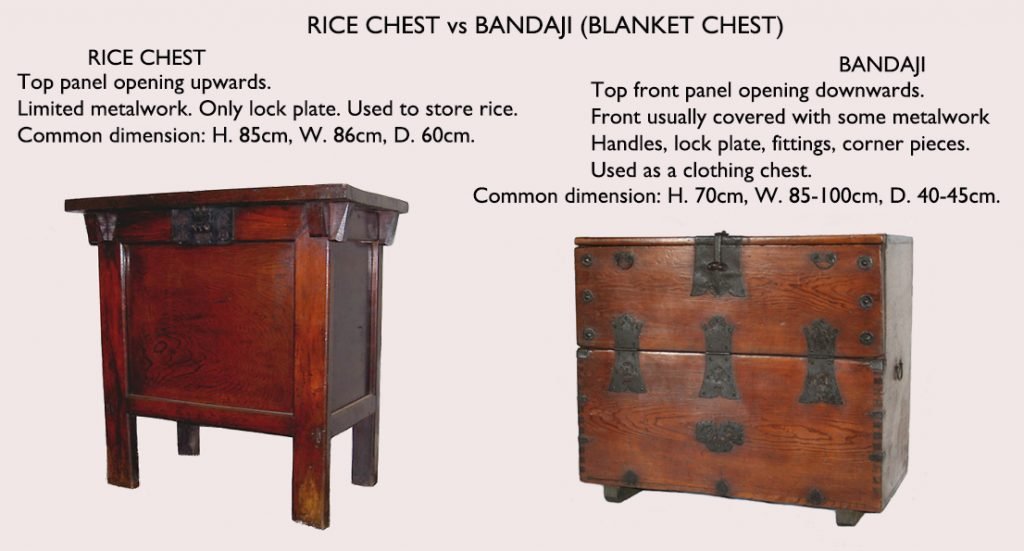
KOREAN COFFERS AND BOXES – 궤
Boxes of various sizes were utilized to store a wide range of items, including documents, money, jewelry, and small accessories. The larger coffer, known as “Ton Kwe” or Coin chest, was typically found in the men’s quarters called “Sarang Ch’ae“.
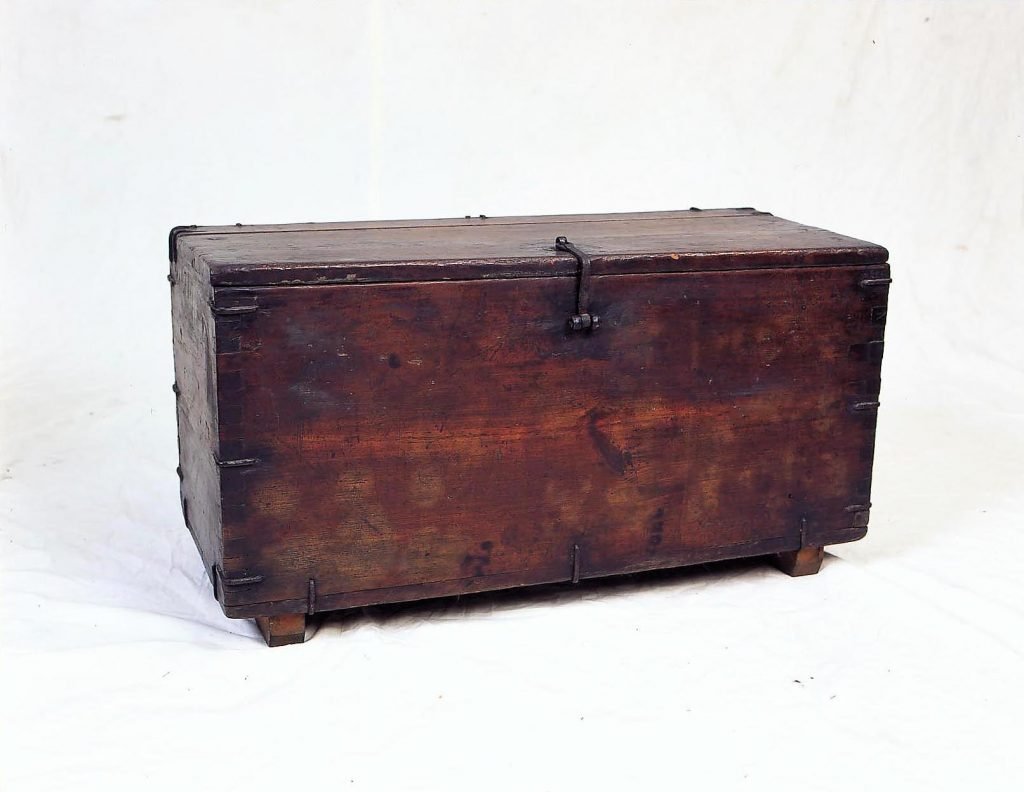
Red Pine Wood. Half opening from the top.
Gyeonggi Province, Korea, Mid 19th Century
H 39 cm, L 74 cm, D 33 cm. Collection: “ANTIKASIA“.
Boxes of smaller sizes, such as wedding boxes, mirror boxes, and sewing boxes, were primarily located in the women’s quarters, known as “Anch’ae“.
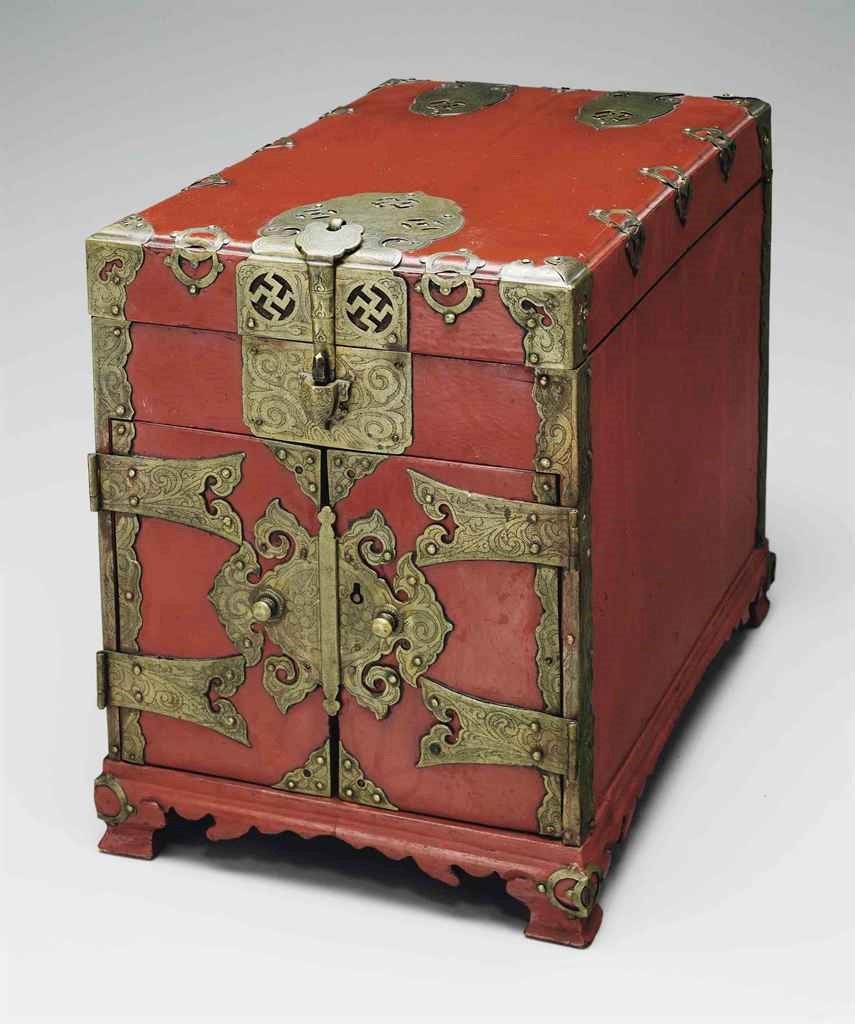
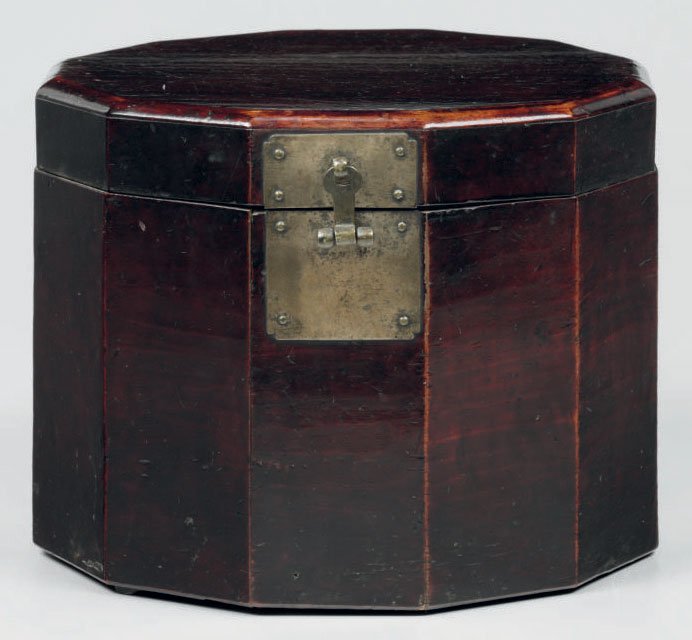
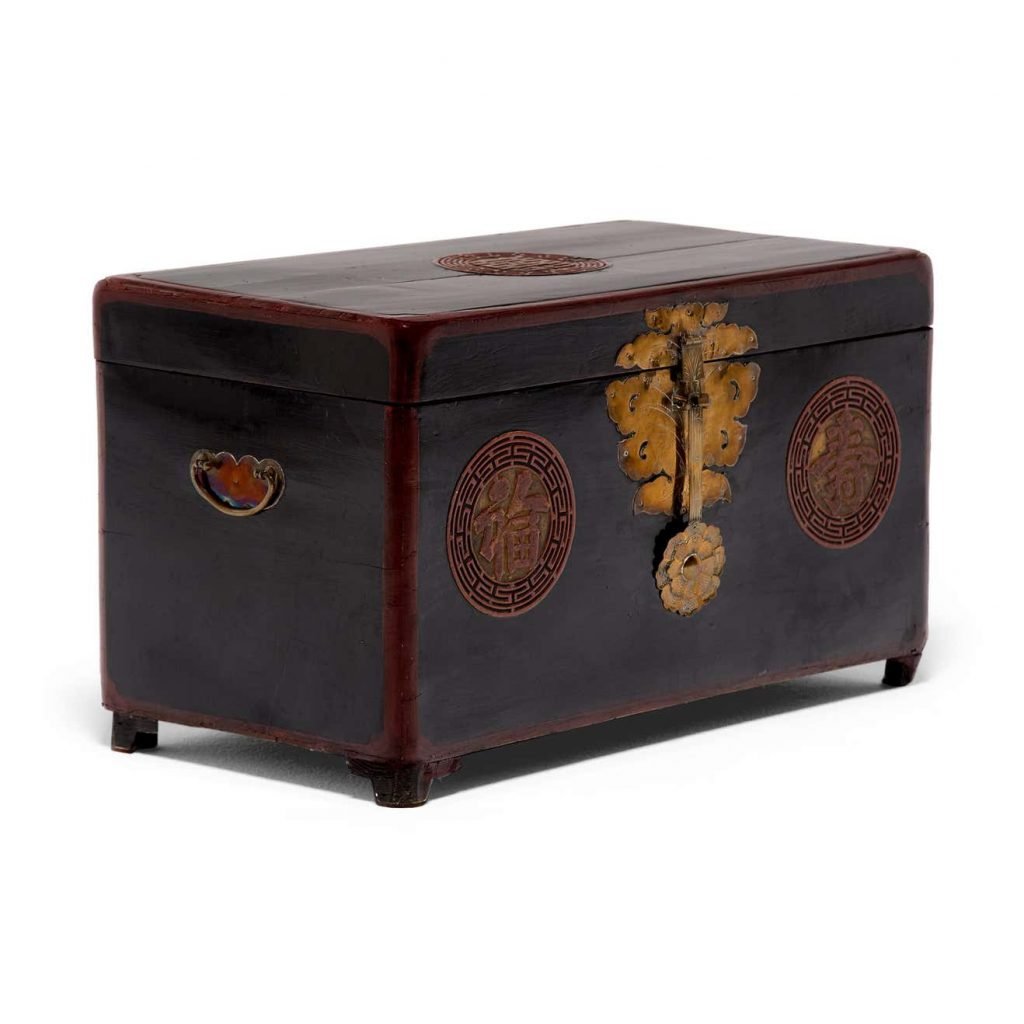
TABLES – 서안
Due to limited space, Korean tables tend to be small and limited in design. The most common type is the “Soban,” also known as a dining tray. Additionally, there are small altar tables used by monks in temples or scholars, but these items are now quite rare and challenging to find.
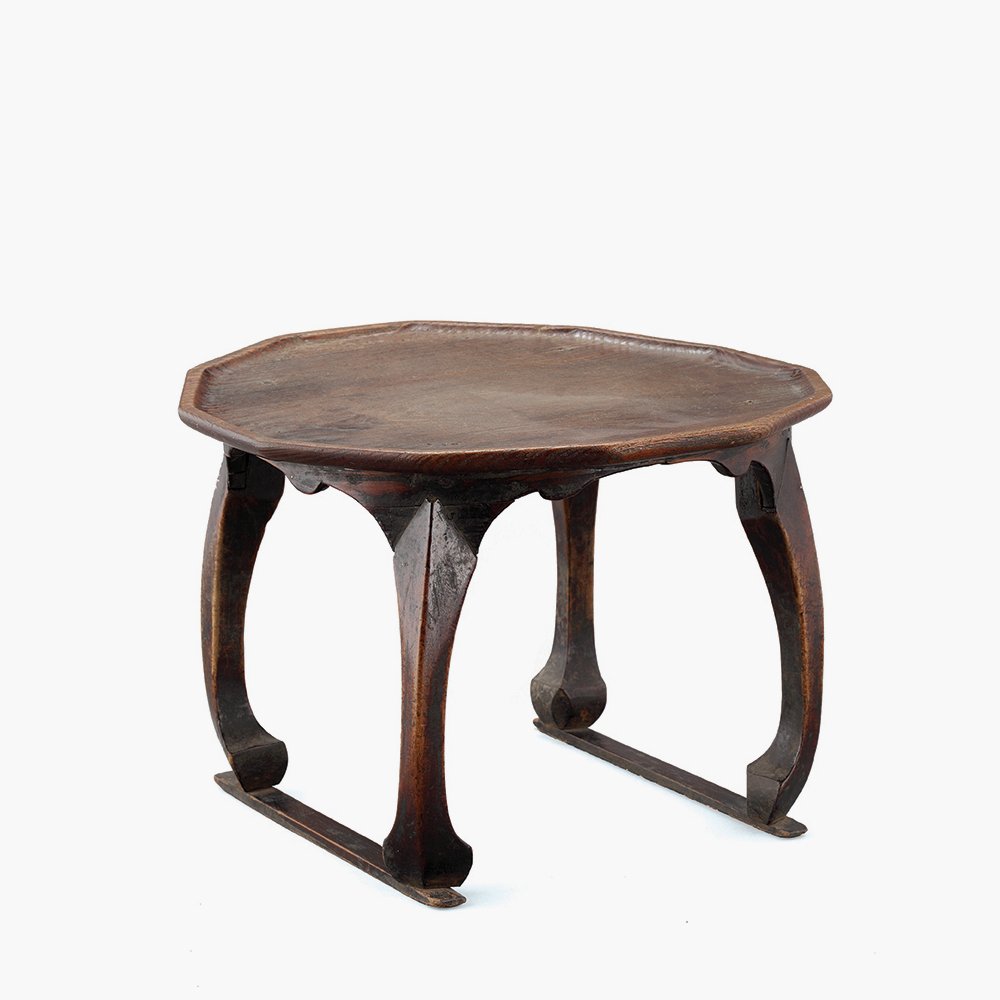
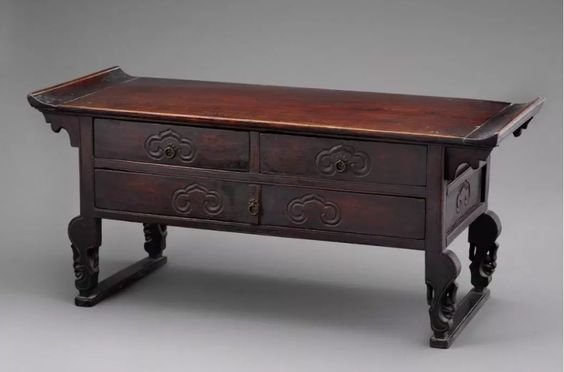
BOOK CHEST
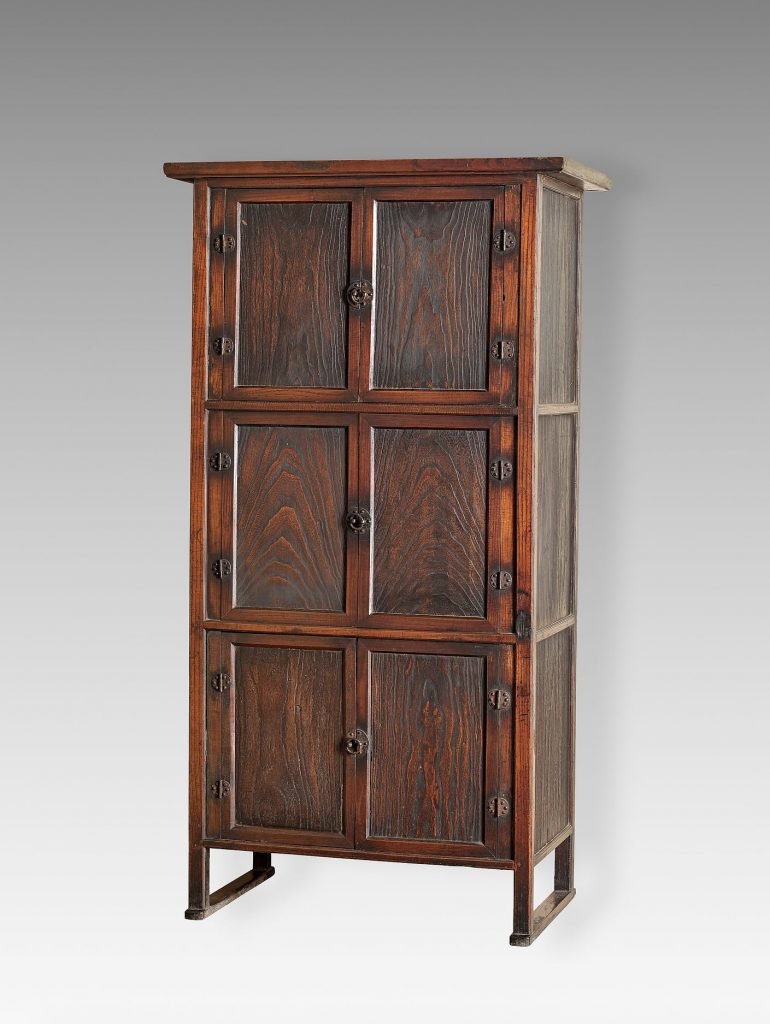
Paulownia wood. H. 133cm W. 45cm, D. 35cm.
Early 20th century. Collection of the National Museum of Korea.
Book chests, such as the one illustrated here, are pieces of furniture that emerged towards the end of the Joseon dynasty in the late 19th century to the early 20th century. Prior to their appearance, scholars and nobles typically utilized smaller document chests equipped with doors and drawers.
This three-level book chest features a straightforward design that distinguishes it from clothing or kitchen chests. Book chests were typically crafted from paulownia wood, which was often stained dark. They were narrower in comparison to the latter two types of chests, and they consisted of three equal levels that opened with doors covering almost the entire front surface. They did not incorporate drawers, and the use of metalwork was minimal.
As demonstrated in the photo illustrating the three types of furniture, the kitchen chest tended to be bulkier and had smaller doors, sometimes accompanied by small drawers at the top. It was commonly constructed from pine and Elmwood and finished with a dark stain. In contrast, the three-level clothing chest, a piece of furniture often found in women’s quarters and sharing a design similar to the kitchen chest, was frequently adorned with a significant amount of metalwork. Elm, zelkova, maple, or cherry wood was employed for the front part without a dark stain to showcase the grain of the wood.
FURNITURE COMPARAISON.
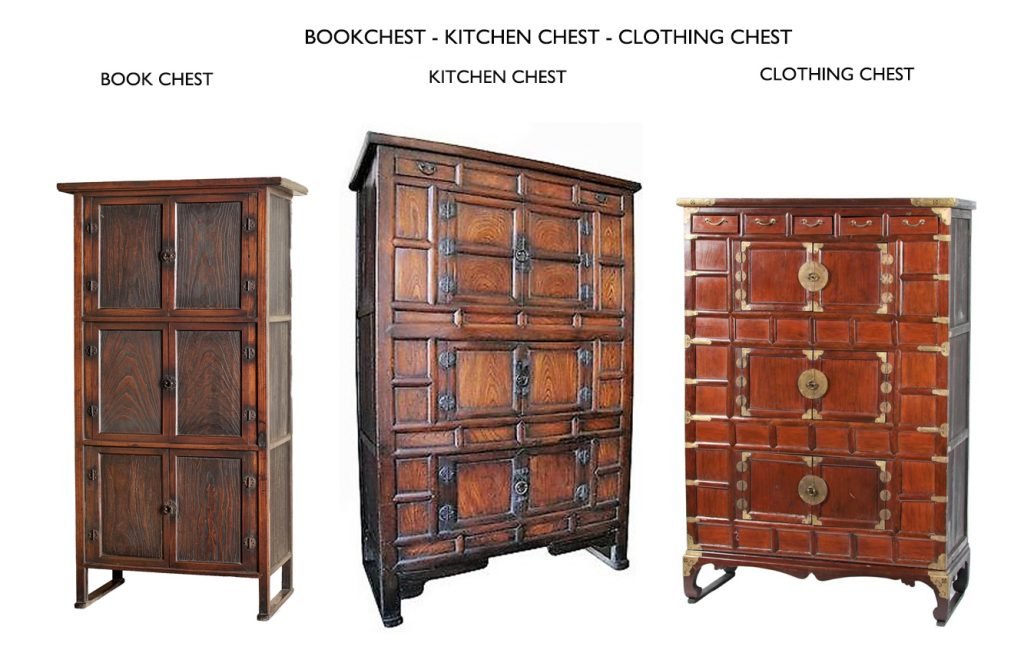


Hello. I recently purchased 2 chests of drawers. These are Korean pieces. There is a Korean coin border outlining the top of each chest. The tops are also heavily lacquered. These pieces appear to be approximately 50 years old. (My family lived in Seoul in the 1980’s.). I would like to do some repair work to them. They are dark colored. Can you recommend a stain color, please?
Dear Debbie,
I recommend you to join our community on facebook at: https://www.facebook.com/groups/koreanantiquefurniture/. In this group, you will be able to post this question. Add also at least one photo of your chest and do not forget to mention your location.
Best regards
Yves.
NB. If you do not have access to facebook, I will need you to send me a photo of your piece as well as your location.